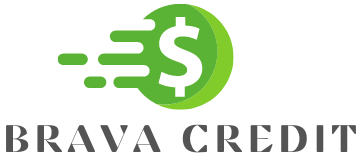Managing and reducing debt is essential for achieving financial stability and improving your overall financial health. Whether you’re dealing with credit card debt, student loans, or other types of debt, adopting smart strategies can help you get back on track and regain control of your finances. Here are some effective strategies for managing and reducing your debt.
1. Assess Your Debt Situation
The first step in managing your debt is to take a comprehensive look at your financial situation. Create a list of all your debts, including the balance, interest rate, and minimum monthly payment for each one. This will help you understand the full scope of your debt and prioritize your repayment strategy.
Actions to Take:
- List all debts: Include credit cards, student loans, personal loans, and any other outstanding obligations.
- Calculate total debt: Determine the total amount you owe across all accounts.
- Evaluate interest rates: Identify which debts have the highest interest rates, as these should be prioritized.
2. Create a Budget
A well-structured budget is essential for managing debt effectively. It helps you track your income and expenses, allowing you to allocate funds towards debt repayment while covering your essential needs.
Actions to Take:
- Track income and expenses: Use budgeting tools or apps to monitor your spending.
- Set spending limits: Allocate specific amounts for categories like groceries, utilities, and entertainment.
- Prioritize debt repayment: Allocate any surplus funds towards paying off your debt.
3. Adopt a Debt Repayment Strategy
There are several debt repayment strategies to choose from. The most effective strategy depends on your financial situation and personal preferences. Two popular methods are the debt snowball and debt avalanche methods.
Debt Snowball Method:
- Focus on paying off the smallest debt first while making minimum payments on other debts.
- Once the smallest debt is paid off, move to the next smallest debt, using the freed-up funds to accelerate repayment.
Debt Avalanche Method:
- Focus on paying off the debt with the highest interest rate first while making minimum payments on other debts.
- Once the highest-interest debt is paid off, move to the next highest interest rate debt.
Actions to Take:
- Choose the method that aligns with your financial goals and motivates you.
- Stay consistent and track your progress to stay motivated.
4. Negotiate Lower Interest Rates
High interest rates can make it challenging to reduce debt. Contact your creditors to negotiate lower interest rates on your credit cards or loans. Many creditors are willing to work with you if you have a good payment history and demonstrate a commitment to repaying your debt.
Actions to Take:
- Review your credit report: Ensure there are no errors or inaccuracies that could impact your creditworthiness.
- Contact creditors: Request lower interest rates and explain your situation.
- Explore balance transfer options: Consider transferring high-interest credit card balances to a card with a lower rate.
5. Consolidate Your Debt
Debt consolidation involves combining multiple debts into a single loan with a lower interest rate. This can simplify your payments and potentially reduce your overall interest costs. Options for debt consolidation include personal loans, balance transfer credit cards, and home equity loans.
Actions to Take:
- Research consolidation options: Compare interest rates and terms from different lenders.
- Evaluate the costs: Consider fees, loan terms, and how the consolidation will impact your overall debt.
- Choose the best option: Select the consolidation method that offers the best financial benefit and fits your needs.
6. Cut Unnecessary Expenses
Reducing unnecessary expenses is crucial for freeing up extra funds to put towards debt repayment. Review your spending habits and identify areas where you can cut back to allocate more money towards your debt.
Actions to Take:
- Identify non-essential expenses: Look for areas like dining out, subscriptions, and entertainment where you can reduce spending.
- Create a plan: Develop strategies to cut costs, such as cooking at home or canceling unused subscriptions.
- Redirect savings: Allocate the money saved from reduced expenses towards paying off debt.
7. Increase Your Income
Boosting your income can accelerate debt repayment and improve your financial situation. Consider taking on additional work, freelancing, or finding other ways to earn extra money.
Actions to Take:
- Explore side hustles: Look for part-time jobs or freelance opportunities.
- Sell unused items: Generate extra cash by selling items you no longer need.
- Leverage skills: Offer services or skills you have, such as tutoring, pet sitting, or consulting.
8. Seek Professional Help
If you’re struggling to manage your debt on your own, consider seeking professional help. Credit counseling agencies and financial advisors can provide guidance and support for developing a debt repayment plan.
Actions to Take:
- Research reputable agencies: Look for certified credit counseling agencies with positive reviews.
- Consult a financial advisor: Seek advice from a financial professional to develop a personalized plan.
- Consider debt management plans: Work with a credit counselor to create a structured plan to pay off your debt.
Conclusion
Managing and reducing debt requires a combination of strategic planning, disciplined budgeting, and proactive measures. By assessing your debt, creating a budget, adopting a repayment strategy, negotiating lower interest rates, consolidating debt, cutting unnecessary expenses, increasing your income, and seeking professional help, you can take control of your financial situation and work towards becoming debt-free. Stay committed to your goals, track your progress, and make adjustments as needed to achieve long-term financial stability.

